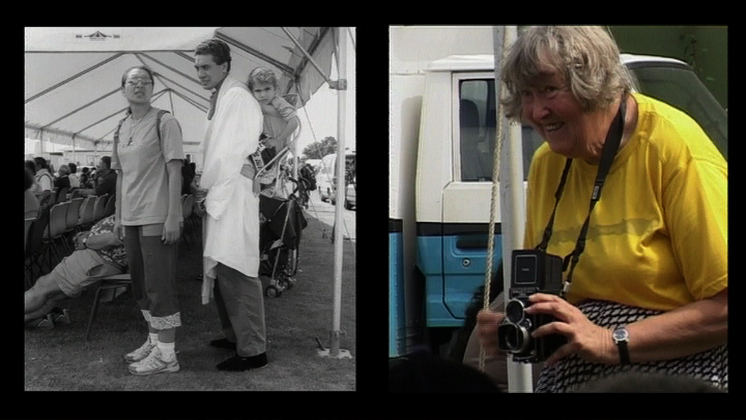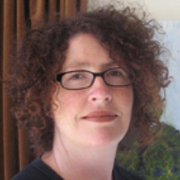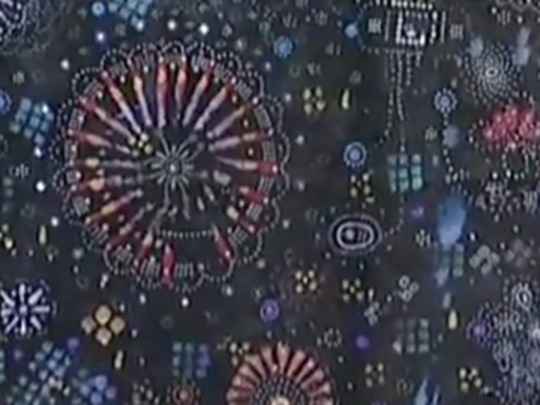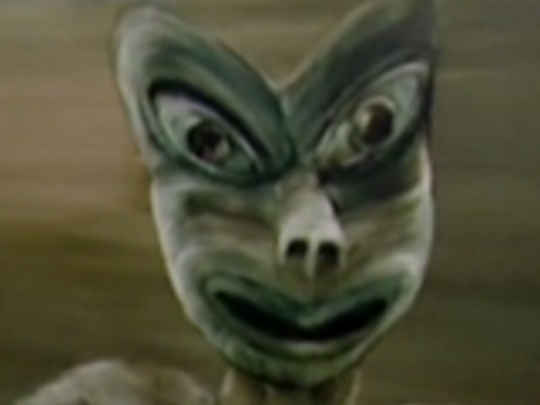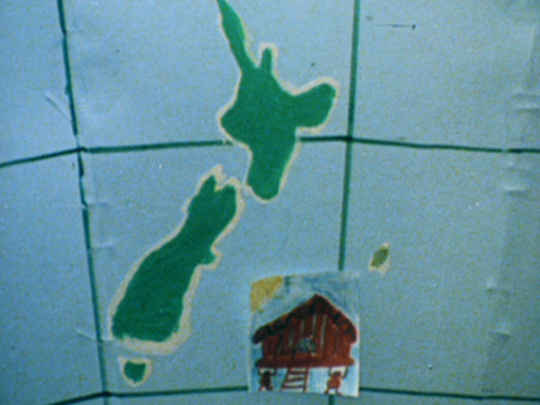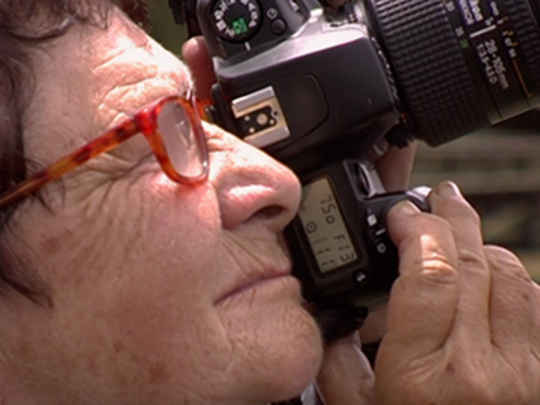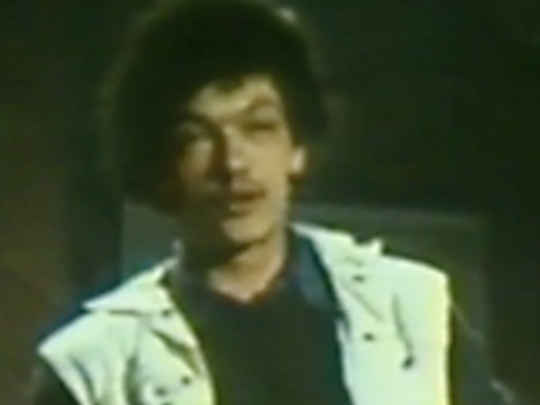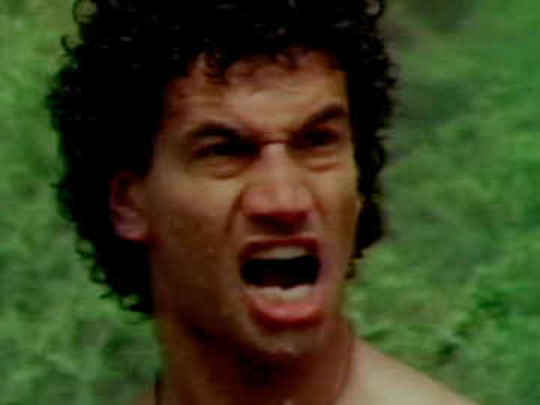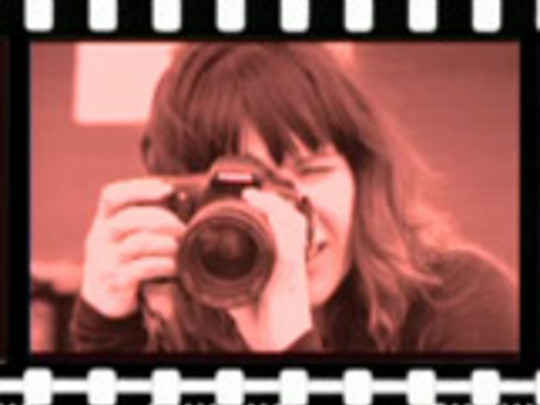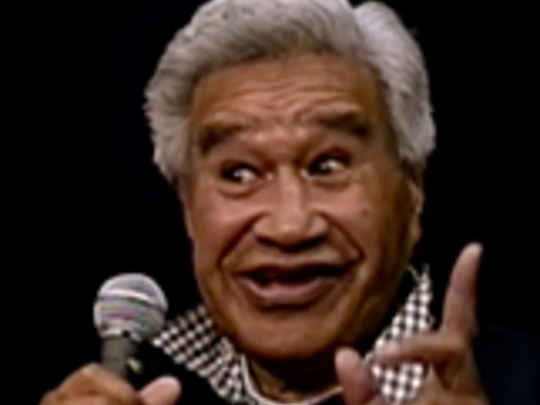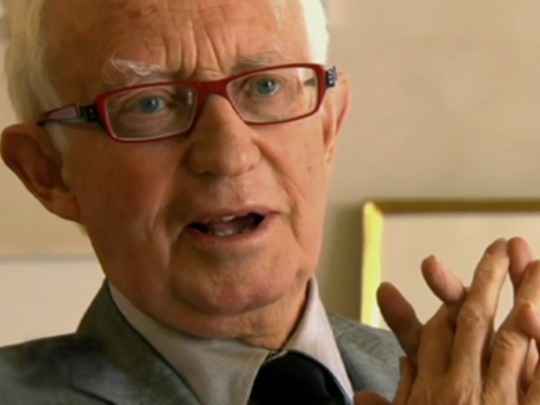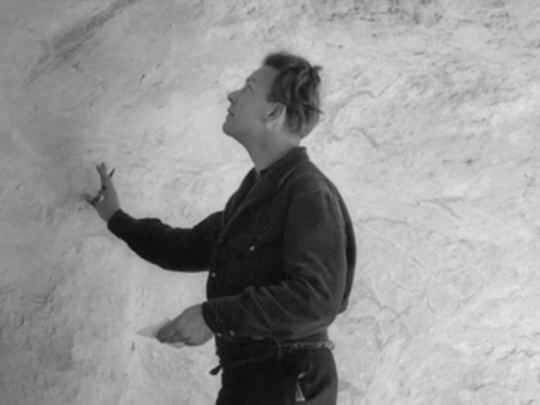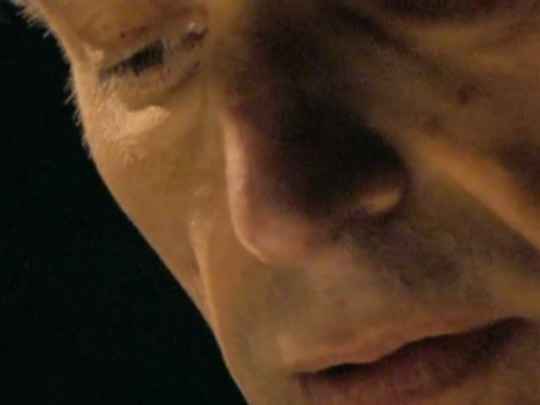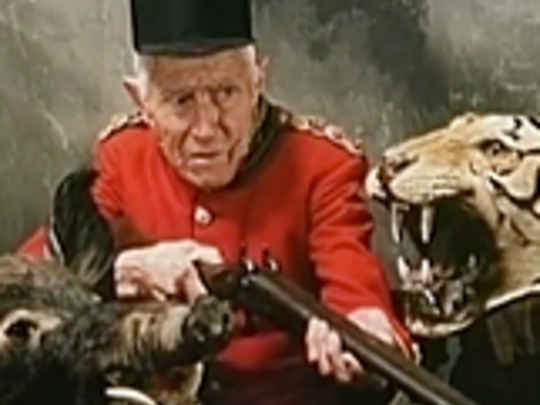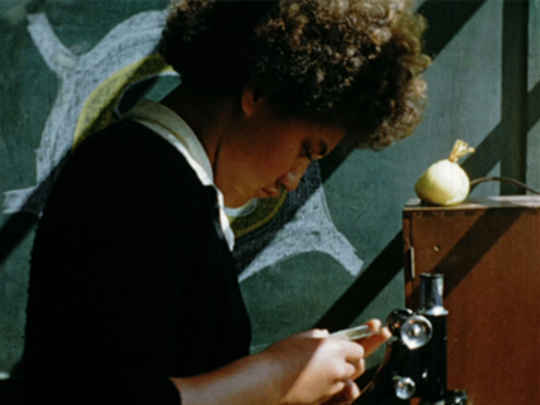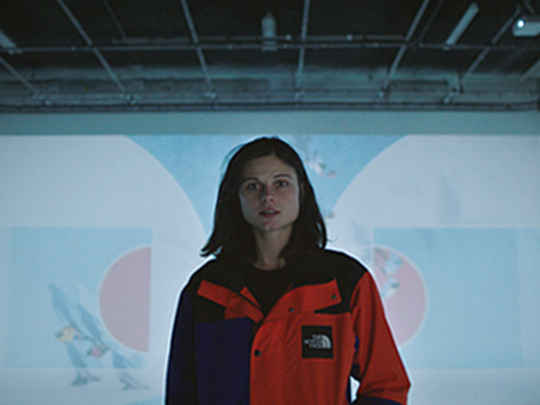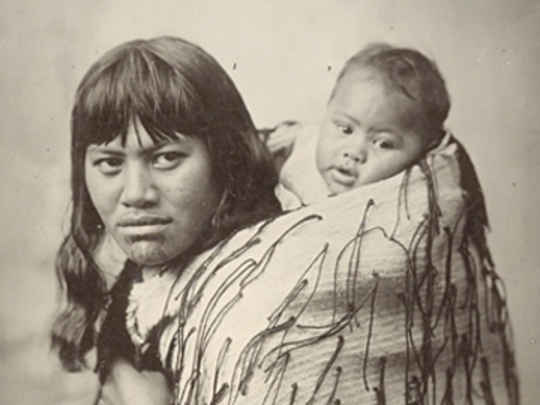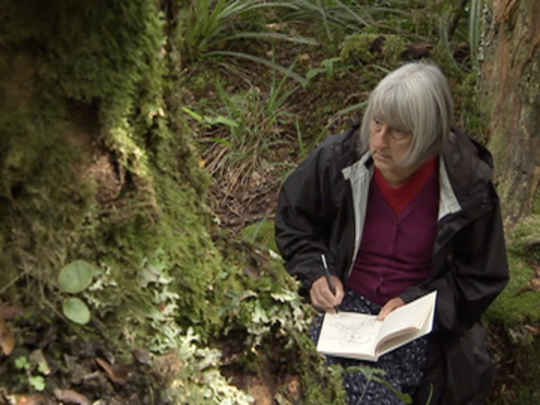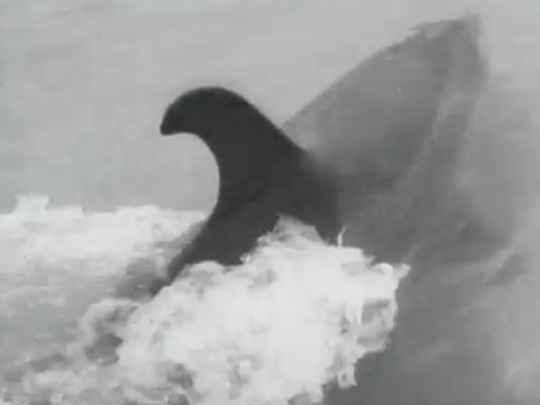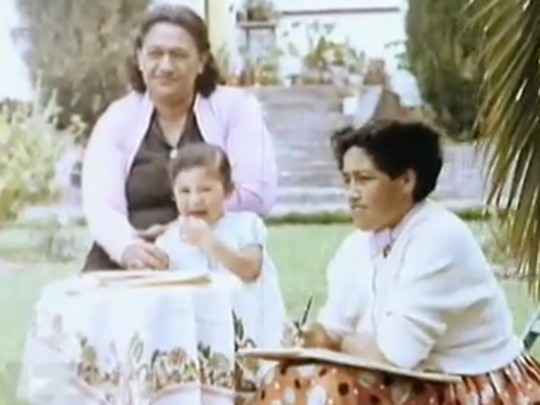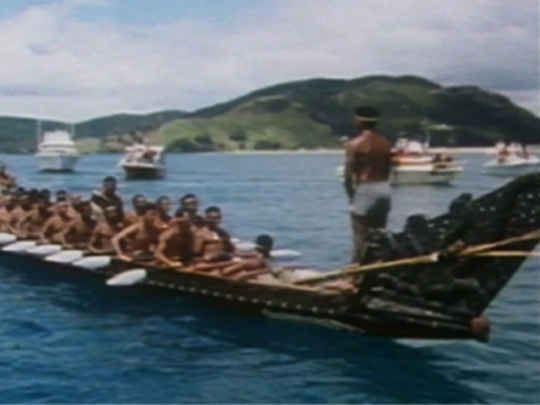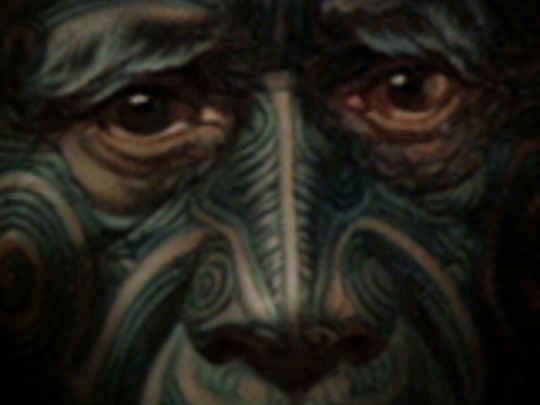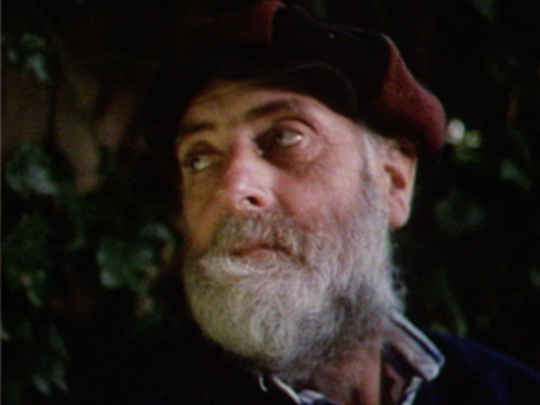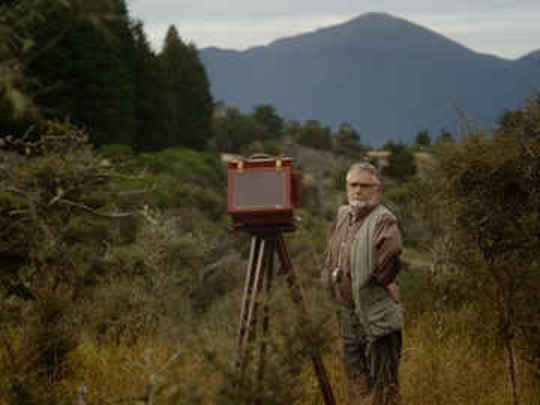Ans Westra - Private Journeys / Public Signposts
Television (Full Length) – 2006
A perspective
Directed by Luit Bieringa, Private Journeys / Public Signposts was made in the wake of the 2004 retrospective exhibition of Ans Westra's work that Bieringa curated, HandBoek: Ans Westra Photographs. But the film stands alone in its presentation of the woman behind the camera. It is constructed around a long interview with Westra and a conversation with poet Hone Tuwhare, and follows Westra as she photographs around New Zealand. Locations include Ratana Pā and the memorial service for former PM David Lange.
Westra arrived in New Zealand in 1957, aged 21, from the Netherlands. Basing herself in Wellington, she quickly established herself as a photographer, joining the local camera club, and working in photographic studios. She was drawn to Māori — a vivid contrast to her European background — as subjects for her work. She joined Ngāti Pōneke — a pan-tribal organisation for urban Māori in Wellington — and became their unofficial photographer, documenting events including the opening of Lower Hutt's Waiwhetū Marae. Her photographs were frequently published in Te Ao Hou. The Department of Maori Affairs publication helped establish her reputation as a photographer.
Westra's arrival in New Zealand coincided with the migration of Māori from rural areas to the cities, in search of work and opportunities. This shift resulted in changes and tensions that continue to shape New Zealand society. Westra recorded this major historical transition in thousands of images — of hui, and other Māori gatherings, but also of other occasions that brought Pākehā and Māori together, like race days and festivals.
In 1964 the School Publication Branch of the Department of Education published Washday at the Pā, photographed illustrated and written by Westra. It was conceived as an ongoing series on families from around the world, and told the story of a rural Māori family living happily in a rundown house. The Māori Women's Welfare League was incensed: "the living conditions are not typical of Māori life, even in remote areas; there are few Māori living under such conditions today . . . If the aim of the publication was to depict a happy Māori family relationship, it is submitted that a more typical, more average family background could have been chosen."
After pressure from the league, the book was withdrawn from schools and general circulation, and subsequently destroyed. Caxton Press republished it later that same year, with extra photographs and an introduction by Anthony Alpers. In 2011 {Suite} Publishing unveiled an updated version.
The controversy was a sign of changing times. Young Māori were becoming educated and conscious of self-determination, and some grew suspicious of Pākehā recording their history. Consequently Westra was not welcome at some Māori gatherings as a photographer. But as Bieringa noted in his introduction to Handboek, Westra was nothing if not persistent. "When Westra, who like the late historian Michael King, subsequently received knockbacks from radical Māori who claimed that they, as non-Māori, had no right recording Māori society, she was shocked and shaken into withdrawal — for a while — until she could resume that aspect of her work. With so many Māori friends and colleagues, it was something she was prepared to scale down, if necessary, but ... not to stop."
The film includes an interview with te reo proponent Kāterina Mataira, who worked with Westra on a later book. Mataira discusses this change in Māori attitudes to Westra's work, from skepticism to embrace. Ultimately the film affirms the progressive role her work played in the cultural renaissance of Māori, and in the Aotearoa counterculture of the 1960s and 70s.
As a coda to the subject, Westra talks about her experience with Wellington dub band Fat Freddys Drop. In 2005 they approached her about taking a series of publicity photographs for a music video, and using some of her 1960s images. For the multicultural Fat Freddys ensemble, Westra's imagery complimented the band's music and shared its distinctly down-home Aotearoa vibe.
Westra's positive engagement with her subjects underpins the continuing appeal of her photography. Photographic expert Peter Turner wrote of Westra's "commitment and expectation — to a nation and a medium which can express that belief in worth and human dignity . . . She pictures what she has seen and trusts us to believe her."
This was Luit Bieringa's first film; but he'd known Westra for many years as a fellow Dutch ex-pat, and through his roles in art galleries (he was director of the National Art Gallery). Bieringa described the project as "most rewarding as well as frustrating...Rewarding in the sense that the medium of film has opened up new avenues of telling and conveying the stories, frustrating in the sense that editorial requirements are even more heartbreaking than those involved in producing an exhibition or book — all those hours of footage remaining on the cutting room floor." Bieringa was able to create this extended 71 minute cut, which debuted at the NZ International Film Festival, shortly before the 46 minute version screened on arts show Artsville.
Private Journeys / Public Signposts was nominated for Best Arts/Festival Documentary at the 2007 Qantas Television Awards. It was shown at New Zealand festivals (including the Māori Film Festival in Wairoa), and overseas (the Hawai'i International Film Festival, Tahiti's FIFO Documentary Festival). It screened in art galleries and museums throughout Aotearoa, and alongside the HandBoek exhibition from 2006 — as well as a 2006 exhibition at Amsterdam's National Museum of Ethnology.
- Mary-Jane Duffy has written for magazines (The Listener), museums (Te Papa) and art galleries, and taught and run the Creative Writing Programme at Whitireia/Weltec in Wellington.
